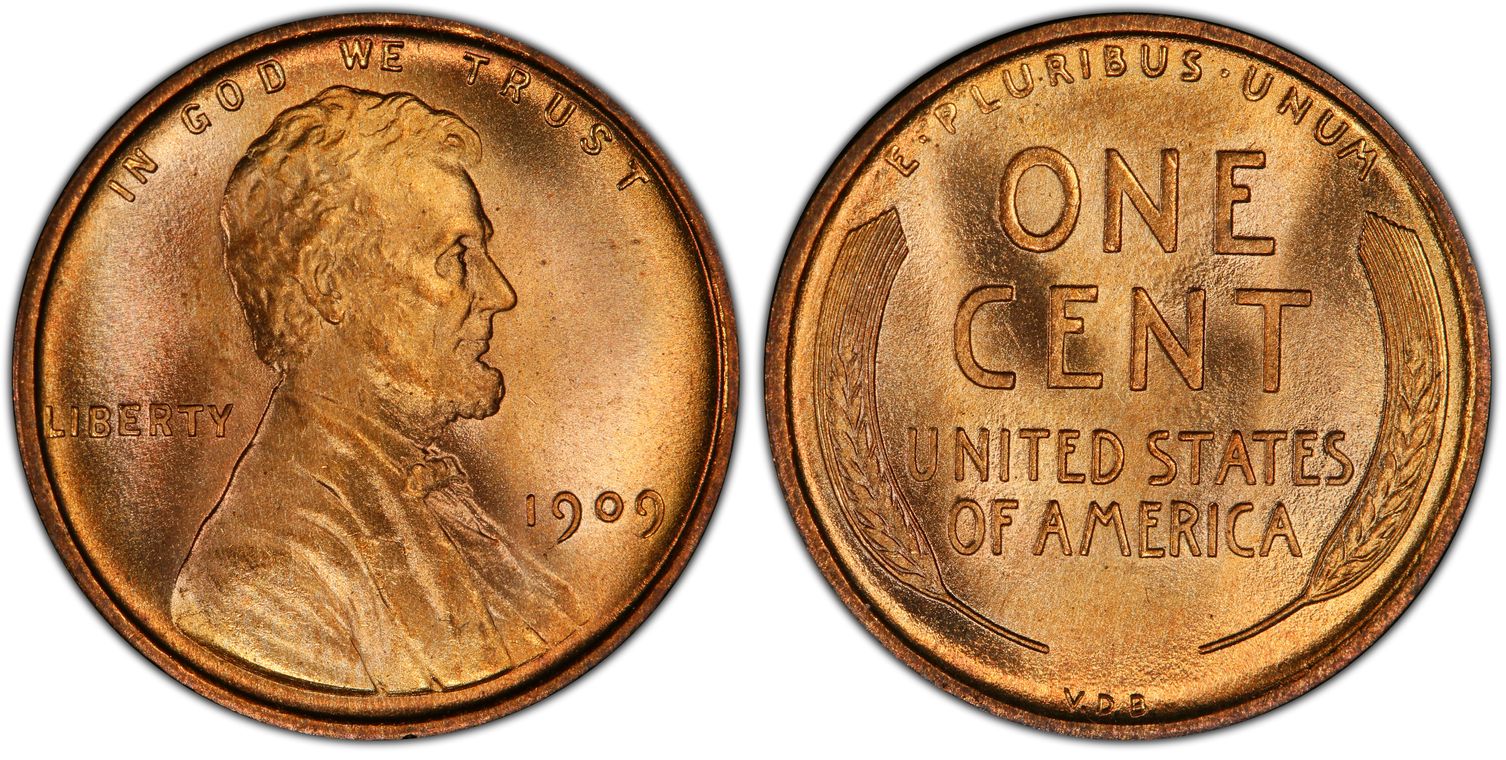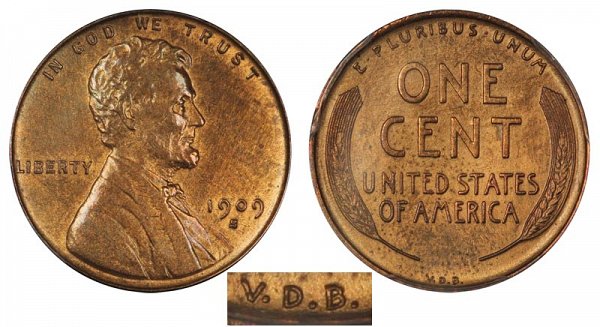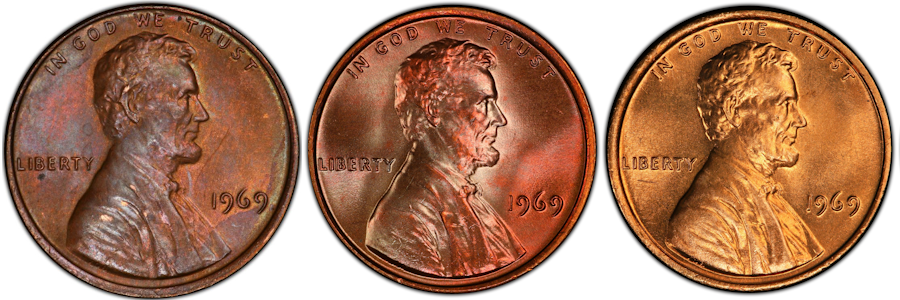1909 VDB Penny Value, Errors, and Varieties
The 1909 VDB Lincoln penny is one of the most popular American coins to collect. Depending on who you ask, it might even be #1 on the list on the greatest U.S. coins of all-time.
1909 VDB penny graded MS-68 RD (PCGS)
The VDB Penny Controversy: Why It's So Collectible
The nickname "VDB" comes from the designer of the coin, Victor D. Brenner. His initials "V.D.B." are found at the bottom rim of the coin's reverse (see image below). There was a considerable amount of public outcry against the inclusion of the initials, however. Partway through production of 1909 pennies, the U.S. Mint decided to remove these three small letters from the design. Thus, some 1909 cents are not VDB cents.
The uproar surrounding Brenner's initials can be traced to two higher-ups at the mint: Chief Engraver Charles E. Barber and Treasury Secretary Franklin MacVeagh. Both reportedly opposed the use of the initials.

1909-S VDB Lincoln Wheat cent. Note the initials of Victor David Brenner.
This controversy had an ironic impact on the 1909 VDB penny. The issue was well-publicized and helped fuel the coin's fame, yet it also alerted coin collectors to the fact the VDB cents would have a very limited production. The coins immediately became sought-after collectibles from the very start. In 1918, Brenner's initials were restored to the coin, but they were moved to the obverse.
1909 VDB Lincoln Penny Prices
MINT STATE GRADES
BROWN
RED-BROWN
RED
DID YOU KNOW?
Coins are graded on a 70-point scale, where 1 is so worn as to be almost unidentifiable, and 70 is perfect, with no damage or blemishes visible even under magnification.
RD, RB, BN: What Do They Mean?
Lincoln Cents are not only graded by condition but also by how much of their original color remains. There are three classifications: Brown (BN), Red-Brown (RB), and Red (RD).

1969 Lincoln Cents graded BN, RB, and RD (PCGS)
These definitions are more subjective than the physical grades laid out in the 1–70 coin grading scale.
Circulated cents and uncirculated ones exposed to air develop a brown, sometimes chocolatey color. All things being equal, cents graded BN are far less desirable to collectors than RB or RD coins.
Red-brown cents have a good portion of their original luster remaining. The exact amount of red remaining for a coin to be considered RB can differ among grading services. Some collectors find that certain RB cents can have more eye appeal than a “better” RD coin of the same condition grade.
Red coins have almost all their original luster present. For older cents, this is usually only possible for new coins kept in rolls or airtight containers or from unopened Mint Sets.
Proof 1909 VDB Lincoln Penny
Proof coins are made from specially prepared dies and deeply struck one at a time. These coins are meant to be sold to collectors, not circulate. There were only 11,94 Proof 1909 VDB Lincoln pennies struck.
Finest Known 1909 VDB Lincoln Cents and Auction Records
The finest-known examples of the 1909 VDB Lincoln cent are graded MS-68 RD. Five of them have been graded by PCGS and two at NGC.
The record auction price paid for a 1909 VDB Lincoln cent was $56,400 for an MS-68 RD at a 2021 Heritage auction. Recorded auction records may or may not reflect the highest price ever paid for a coin since person-to-person private sales are not recorded.
1909 VDB Lincoln Cent Varieties
Variety coins have had something happen to the die before the coin is struck. (Anything that happens to the penny after they are ejected from the coining press is referred to as “post-mint damage.”)
Common mint Varieties include Doubled Die on Reverse (DDR), Doubled Die on Obverse (DDO), and Repunched Mint Mark (RPM).
The only major 1909 VDB Lincoln penny variety is the 1909 VDB DDO. Prices range from $70 for VF-20 BN to $14,000 in MS-67 RD. The finest known 1909 VDB DDO is graded 67+ at PCGS with a price estimate of $47,500.
1909 VDB DDO PENNY PRICES
MINT STATE GRADES
BROWN
RED-BROWN
RED
Error Coins
Error coins result from a mechanical malfunction of the coin press or a defect or mistake in the coin blank itself. (Anything that happens to them after they are ejected from the coining press is referred to as “post-mint damage.”)
Common error coins are:
Read more about Lincoln cents and how much they are worth:
1909-S VDB Penny Values, Varieties, and Rarities
10 Most Valuable Pennies: Are These in Your Pocket Change?
1944 Lincoln Wheat Penny Value Guide
1969 Lincoln Penny Values, Errors, and Rarities2009 Lincoln Penny Bicentennial Cents: Value, Errors, and Designs
What Are The Different Penny Errors and How Much Are They Worth?

Steven Cochran
A published writer, Steven's coverage of precious metals goes beyond the daily news to explain how ancillary factors affect the market.
Steven specializes in market analysis with an emphasis on stocks, corporate bonds, and government debt.
